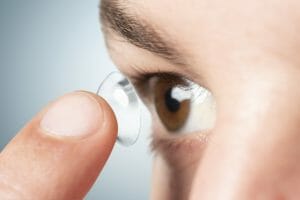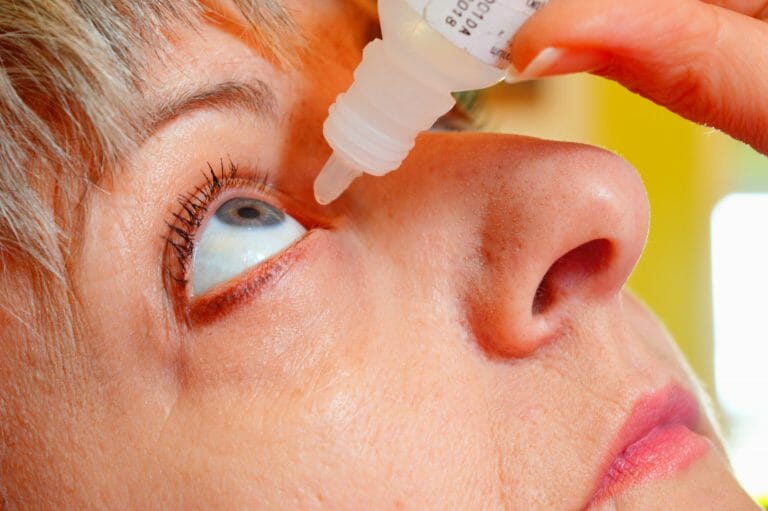If you have irritated, red, dry, or pink eyes, you should find the nearest drugstore to get your hands on quality eye drops. There are ointments or eye drops to relieve the symptoms of almost every eye problem, such as itchiness. But on reaching the pharmacy, you will see endless shelves of products right in front of you. With a huge variety of eye drops available in the drugstores, the question arises does it really matter which you select? Any guesses? Yes. Surely it matters a lot. This article will help you choose the right drops. Different kinds of eye drops are used for countering many eye problems. Choose the wrong one, and you will make the symptoms even worse. Choosing the right drop can help you relieve your eye conditions without side effects. If you are not sure about the perfect ointment, your doctor may help you find the right product. You may need to try different brands as you might not find a particular product useful for the treatment.
Due to the following conditions, major causes, and symptoms, you should use drops:
- Dryness
- Allergies
- eye discharge (Mattering)
- Red eyes (bloodshot)
- Pink eye (Infection)
- Itchy eye
- Swelling
- Eye Irritation
- Burning feeling
- Swollen eyelid
- Soreness
But before choosing drops or other related products, it is better to consult an eye doctor if you develop any of these eye conditions to find out the severity, cause of the issue, and the ideal treatment. Different allergy drops can do a combination of things, but you should have some idea about the types of drops used for different serious eye conditions. You should fix an appointment with your doctor for advice, diagnosis, or treatment for the betterment of your eye health.
Over-The-Counter Eye Drops or Prescription Eye Drops?
There are two categories of eye drops. These are over-the-counter (otc) eye drops or non-prescription drops and prescription eye drops. OTC eye drops are quite right in most cases, and they normally are cheaper in comparison to prescription eye drop. But before picking non-prescription eye drops, it is recommended to get an appointment with your eye doctor to find out which are ideal for your unique requirements. Never gamble with your eye health and keep your eyes protected from contaminants.
Eye Drops for Dry Eye
Short-term dry eyes are relieved using artificial tears, also called lubricating drops. They respond extremely well to artificial tears. But they are not suitable for long term use. They are best when the cause of dry eye is linked to short-term circumstances, including tiredness, digital eye strain, or being outdoors in hot and windy weather conditions. Dryness can also be due to poor tear production. Artificial tears may not alleviate symptoms, so don’t choose them for long term use.
Almost every non-prescription lubricating eye drop supplements your natural tears. It makes your eyes more comfortable and moist by adding different tear elements that are already present in your eye.
Try not to use decongestant drops for your dry eyes. You can easily identify these eye drops as brands are advertising them to relieve your reddish eyes in the pharmacies. Although these drops can reduce your eyes’ redness, they worsen the dry eyes after some time of use.
You should use a top-quality ointment or lubricating gel if your dry eye issue is very severe. Try to use them before sleeping as they cause blurry vision for some time after using them for relieving your dry eyes.
Eye Drops for Redness
Whitening drops or decongestant drops are used to help your eye become less red. These types of drops have vasoconstrictors that reduce redness by shrinking the extremely small blood vessels of the sclera (the white part of your eyes), making them almost invisible. They effectively narrow blood vessels.
While these eye drops are impactful in reducing redness, remember that they can mask a potentially dangerous underlying issue. So, it is suggested to see your eye doctor first to determine the cause of the eye redness. He/she will provide medical advice diagnosis.
Decongestant eye drops may cause some adverse effects such as dilated pupils, irritation, dryness, etc., if you use them frequently.
Plus, your eyes may develop even more redness when the effect of the eye drops is finished, forcing you to use them more often. Your eyes can also make some kind of tolerance to the eye-whitening effect of these drops. Once again, pressuring you to use them more and more.
Eye Drops for Itchy Eye and Allergies
Antihistamine eye drops are used for treating your itchy eyes due to different allergies. They are specially formulated for this purpose. This allergy eye drops function by lowering the amount of histamine in your eye tissues. Histamine is the chemical that your immune system produces when you encounter any allergy, such as pet dander. Histamines trigger eye irritation when released by your body.
Many eye symptoms, including swollen, puffy eyes, itchiness, redness, and wateriness, are caused due to allergies. It would be best if you used non-prescription antihistamine eye drops to treat these troublesome eye problems.

Antihistamines are also found in some decongestant eye drops formulated for red eyes. Decongestant eye dr
ops are advertised as a treatment for itching caused by an allergy, but they are not suitable for use for a long time.
Eye Drops for Discharge Sore Eye, or Swelling
It is crucial to identify the underlying cause before taking help from eye drops for treating soreness. If you use your eyes a lot, are dry, strained, or tired, they will soon become sore. In such cases, you better contact your eye doctor to rule out any kind of serious eye infection. You may use lubricating eye drops to relieve irritation due to visual stresses like crying, swelling from allergies and inflammation, and eye discharge related to eye allergies.
Eye Drops for Pink Eye and Other Infections
Pink eyes are also known as conjunctivitis. It is one of the most common types of eye infection. Several kinds of conjunctivitis are referred to as pink eye.
Different types of eye drops are needed for different kinds of conjunctivitis infection. So, to be on the safe side, consult your eye doctor to follow the right treatment.
Bacterial Conjunctivitis
This kind of conjunctivitis commonly turns the eyes extremely sore and red with a yellow, sticky, and thick eye discharge. These eye infections should be taken care of with prescription eye drops from your eye doctor.
Viral Conjunctivitis
It is contagious. There are some types of pink eyes that go away on their own, but worse kinds will cause sore, itchy, red, and watery eyes with a whitish or clear eye discharge. You might also experience blurry vision.
Allergic Conjunctivitis
It commonly causes swollen eyelids, bloodshot, itchy, watery eyes. OTC antihistamines such as Benadryl, Zyrtec, or Claritin can help you relieve the allergy.
Eye Drops and Contact Lenses
You may use rewetting eye drops with contact lenses as they are specially formulated for contacts. These drops relieve your dry eyes and discomfort related to eye lenses wear. If you opt for over-the-counter lubricating eye drops and use them frequently while wearing eye lenses, meet your eye doctor to confirm if your contact lens type is perfectly compatible with the type of eye drop you have decided to choose.

Many eye drops, including both prescription or over-the-counter, other than rewetting drops, are not formulated for lens wearers. Before using them, remove your contacts as a precaution.


